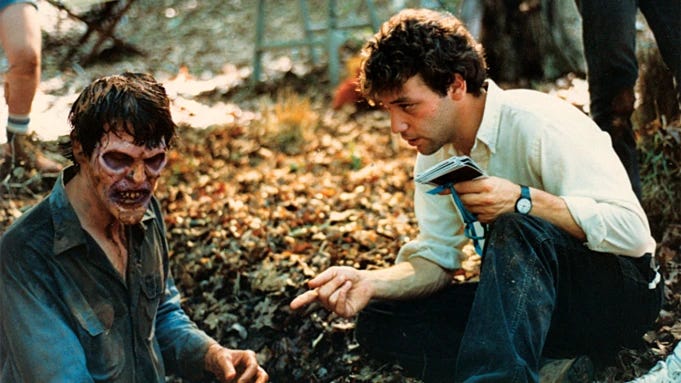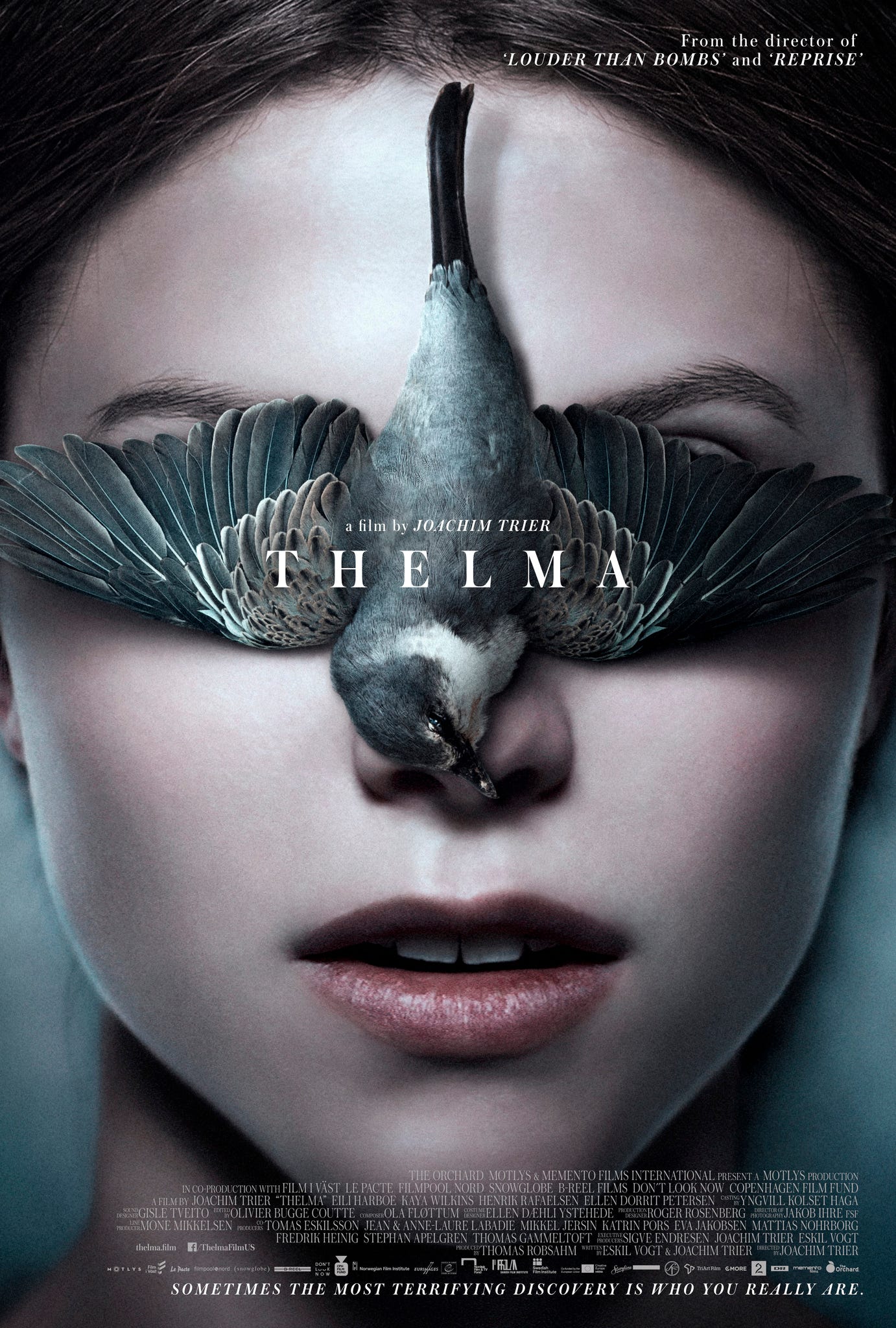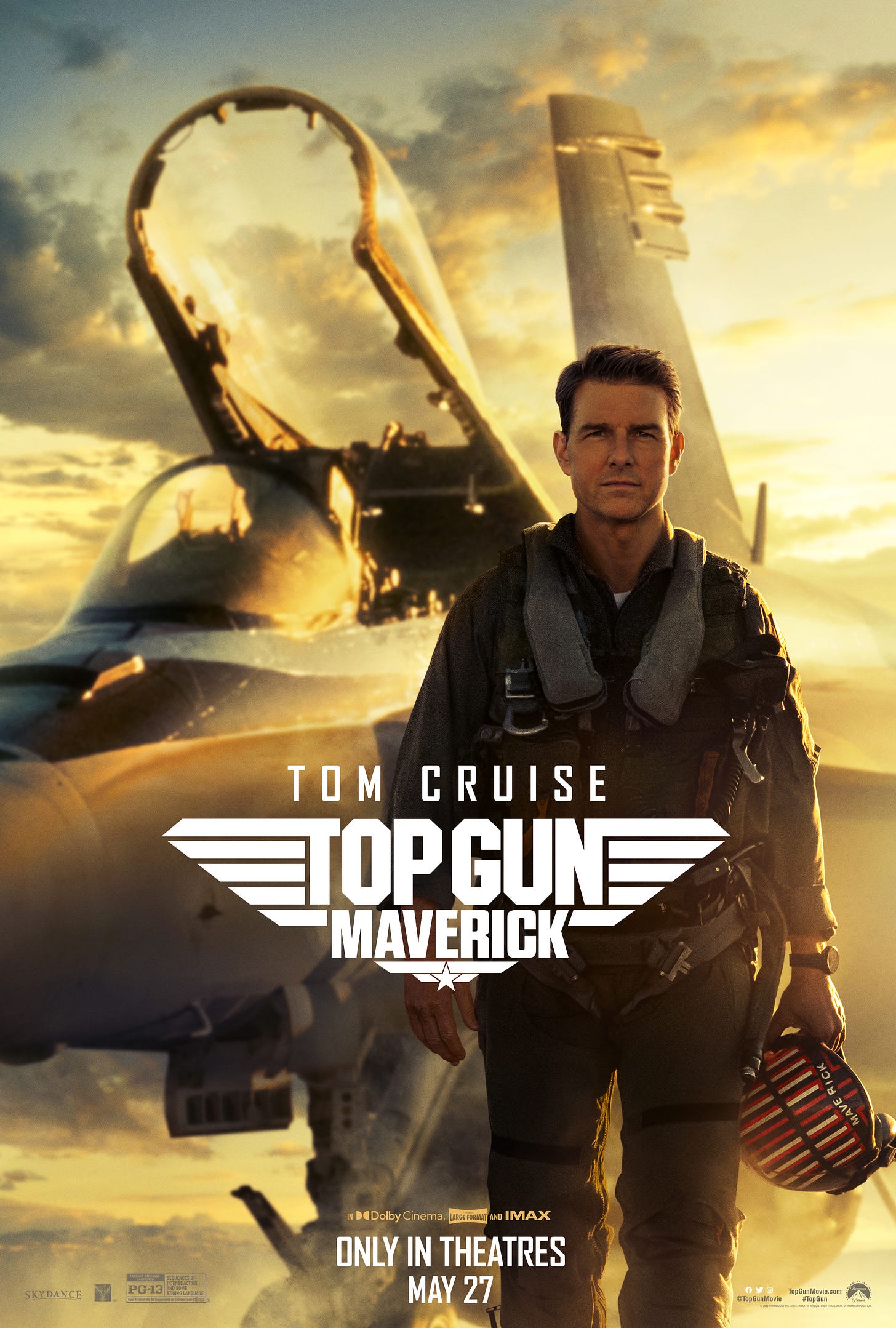The Stuff I Watched: May 31-June 6
We got some horror movies and Tom Cruise. What an excellently odd combination.
Hello there!
I shouldn’t have been surprised that my first post with a Marvel movie would get the most clicks. It’s almost as if those movies are popular. Maybe I’ll just watch crap like that to get views…. Nah just kidding. I will not compromise the integrity of the newsletter (if it has any at all).
I’m glad I have gotten to go to a theater almost every week. Having at least one recent release helps the newsletter feel a little bit current. This week, I get a film from one of the only actors left in Hollywood who truly believes in the innovative summer blockbuster.
Oh yeah, another announcement. I will be doing a second TV Update next week. You’ll get to hear my thoughts about the season finale of Barry and season four of Stranger Things. Fun!
For now though, here are the four films I saw over the last week:
Evil Dead II (1987)
Director: Sam Raimi
A-
I’ll admit I watched this because I was on a Raimi kick after watching Doctor Strange in the Multiverse of Madness last week (you can read my thoughts on it here). Either way, this film was worth it.
This is the greatest B movie ever made. A sequel/semi-reboot of the 1981 original, Evil Dead II greatly improves on the first film of the trilogy. While I still would consider this a B movie, the budget was larger for the sequel, and thus, the quality was much better.
The monsters of the film are clear beneficiaries of the budget increase. The level of detail on these horrific abominations is second to none. The makeup and effects are fantastic as well. In particular, the stop motion effect of the headless corpse taunting Ash is awesome. It gives Raimi the resources necessary to execute his bizarre style.
That style is what makes the film unique. Instead of sticking to strictly horror, Evil Dead II has a great mix of comedic moments. The film intentionally goes over-the-top on gore and the look of the monsters. It's almost ironic. Hell, some of those tiny headless monsters feel more like internet trolls than menacing demons.
The performances are better, too. Ash Williams (Bruce Campbell) is the main character and isn’t really bogged down by the rest of the expendable side characters. Similar to the aforementioned Doctor Strange film and 2002’s Spider-Man, the story begins quickly as Ash faces the evil forces of the woods in less than 15 minutes. But even as he gets attacked, beaten and possessed, Campbell perfectly portrays Ash’s transformation from petrified boyfriend to hardened badass.
I was kinda waiting for the iconic Ash Williams scenes like “Groovy” or “Swallow this” that have become ingrained in pop culture history. I got a little impatient but it is easily worth the wait. I got very excited when they finally showed up, especially when Ash attached the chainsaw to his hand. They are what people think of when the Evil Dead franchise gets mentioned and add to the film’s amazing blend of horror and comedy. Bring me Army of Darkness, baby.
I Saw the Devil (2010)
Director: Kim Jee-woon
A-
Boy, was this film hard to watch at times. Whether it be the actual fucked up violence or the pain the characters are going through, I Saw the Devil is by far one of, if not the darkest film I have seen so far this year.
Two years ago, I watched my first Kim Jee-woon picture, the 2003 horror film A Tale of Two Sisters, and was wildly disappointed. There are some great horror movies that have come out of South Korea since the late 1990s, but this wasn't one of them for me as it was way too melodramatic. And early on in I Saw the Devil, I was concerned that this would be the case.
After the terrifying murder scene that started the film, the film felt a little sappy. But that changed almost instantly and my worries were quickly dashed.
Lee Byung-hun, who plays our protagonist National Intelligence Service agent Kim Soo-hyun, was absolutely dynamite in this performance. He breaks down in tears after his wife (Oh San-ha) gets killed by the so-called “Devil” of the film, Jang Kyung-chul (Choi Min-sik). But for the majority of the film, he is stoic. As Soo-hyun goes on his journey of revenge, he is remorseless and is brutal to criminals, even forcing other government agents to try and stop him.
He’s trying to find anything to bring purpose in his life as he finds and tortures Kyung-chul. But even after Soo-hyun completes his revenge, he once again breaks down as nothing will ever bring his wife back. He is still empty on the inside. Director Jee-woon backs this up with a depressing atmosphere of dark blue skies.
It perfectly contrasts with the yellow and red environments of Kyung-chul’s spaces where he committed brutal acts. The yellow lights shined on the red blood to create a disgusting feeling. Kyung-chul was fucking menacing. He is the embodiment of pure evil. The film constantly reminds you that he is a serial killer, and there is nothing redeeming about it.
What makes Kyung-chul even more interesting as a film character, though, is that despite his persona as this “devil”, he is still human. It doesn’t take long for the government agent to find the bus driver serial killer. It makes sense and feels realistic. However, Soo-hyun doesn’t just kill him. He would torture Kyung-chul and then let him go. Of course, Kyung-chul just went out and killed more people. But Soo-hyun would find him again. It’s the darkest form of torture and makes you question the agent’s methods. I mean, if you take out the first 20 minutes, you would think Soo-hyun is just as sadistic.
I guess that’s part of why I Saw the Devil doesn’t have a higher rating is that it felt very gratuitous. Unlike Evil Dead II, the violence felt over the top sometimes for no reason. For goodness sake, the ending featured a Saw-style contraption.
Thelma (2017)
Director: Joachim Trier
B
My formal introduction to Joachim Trier came with The Worst Person in the World. That was amazing and so was his most previous feature.
Even with supernatural and horror elements, Thelma is a great look into a family’s past and how parents sheltering their children from the real world can have terrifying consequences. This was Trier’s intention as he never wanted to make a straight up horror film.
Our titular protagonist (Eili Harboe) is constantly watched and controlled by Trond (Henrik Rafaelsen) and Unni (Ellen Dorrit Petersen), her father and mother respectively. Thelma suppresses most of her actual feelings, especially the romantic ones she has for her classmate Anja (Kaya Wilkins).
We even that Thelma is being watched. Cinematographer Jakob Ihre uses long takes and extremely wide shots to make us feel that there is always an overbearing presence in her life.
There is a reason why her parents do this, though. Thelma holds supernatural abilities where she can manifest anything she wants. But for nearly the entire film, she can’t control, leading to tragedy, Trond contemplating to kill his daughter and most of all, epileptic seizures. These uncomfortable seizures and subsequent dream sequences lead to my favorite parts of the movie.
I love a good dream sequence in a film since dreams can bring out our innermost desires and make us question what we truly want in this world. If done well on screen, those films become some of my favorites ever (Stanley Kubrick’s Eyes Wide Shut is a great example of this).
Trier opens our eyes to the thoughts of Thelma through these bizarre dreams. One is where she fantasizes about Anja and as she kisses her, a dark snake shows up. Thelma’s family is very Christian and would frown upon her feelings for Anja. So the snake sets up great symbolism (I don’t think I need to explain the symbolism of the snake here).
Another such sequence takes place when she is in her college’s swimming pools. As she starts to have a seizure, Thelma vividly hallucinates being trapped in an enclosed pool where there is no hope of breaking free. It goes well with the fact she was helpless as she was starting to drown and how her whole world, literally and figuratively, is closing in on her. And being a claustrophobe myself, this scene was downright terrifying.
It’s great filmmaking and is one of the many disturbing parts of Thelma’s journey of eventual self-acceptance.
Top Gun: Maverick (2022)
Director: Joseph Kosinski
B+
It’s crazy to think that Tom Cruise is having this moment in the sun again. He got a tribute at the Cannes Film Festival, this film has been wildly successful and the trailer for the new Mission: Impossible film just dropped. Cruise might have figured out the formula for success: don’t bring up Scientology and add to the franchises people have loved you for.
Despite the massive buzz about this film, I still was worried that the sequel to the 1986 classic, Top Gun, would just rely on nostalgia and extreme cheesiness. The opening of the film was a carbon copy of the original. That’s with the case with multiple scenes later on, including the football scene and even the lighting of the blinds is exactly the same from 1986. And there are plenty of lines that were made from a Cheez-it factory.
However, that is really my only criticism. I mean, I had a feeling this would be the case but the positives far outweigh the negatives in this film. Top Gun: Maverick doesn’t look back at the past, it builds from it. Characters who were briefly mentioned only by name in the first movie become key contributors. The prime example is Penny Benjamin (Jennifer Connelly), who becomes the love interest. She is literally mentioned in passing before this film. Maverick is filled with guilt with his past transgression toward the son of his deceased best friend Goose, Rooster (Miles Teller). I respect this very much as the film expands its world in a nice, concise way.
This film also breaks one of my so-called “rules of a good movie.”1 In line with big action blockbusters, there is about as much subtlety as a billboard ad on a turnpike. But being subtle isn’t allowed in this story. Communication is emphasized constantly as a means of survival while the pilots are flying their fighter jets. The characters need to be constantly talking and knowing everything about themselves. So for this reason, I’m fine with this broken rule.
Speaking of fighter jets. Holy shit were those jet scenes breathtaking. There’s no better word for it. The film was shot on these IMAX-Certified Sony Venice 6K Full Frame cameras to give the audience a wide view of the cockpit. The sounds were screeching as well, giving you the full feeling of flying in the skies. It’s cringy to say, but this seriously is a film to watch in a theater. You will not get the same thrilling experience on a computer. Even the training sessions are a non-stop thrill ride.
The actors were put on a three month boot-camp, created by Cruise himself to help them to get used to rapidly increasing G-forces. The production of this film was a massive undertaking. And I can’t really do it justice here. So here is a wonderful summary video made by the folks at IGN, with interviews from the actors and director.
It warms my heart when this amount of time and effort goes into making big blockbusters. Top Gun only served as a fun family joke because my dad thought it would be a good idea to watch that with the whole family (which included three kids all under the age of 10) on vacation in London. The sequel gives me hope that the summer blockbuster doesn’t just need to be put on a green screen. Cruise even mentions how hard the whole cast and crew worked to create this movie so it could be seen in theaters.
Say what you will about Tom Cruise. He’s certainly a showman.
I don’t really have a rules for what makes a good movie. I just love me some subtlety in my films.








